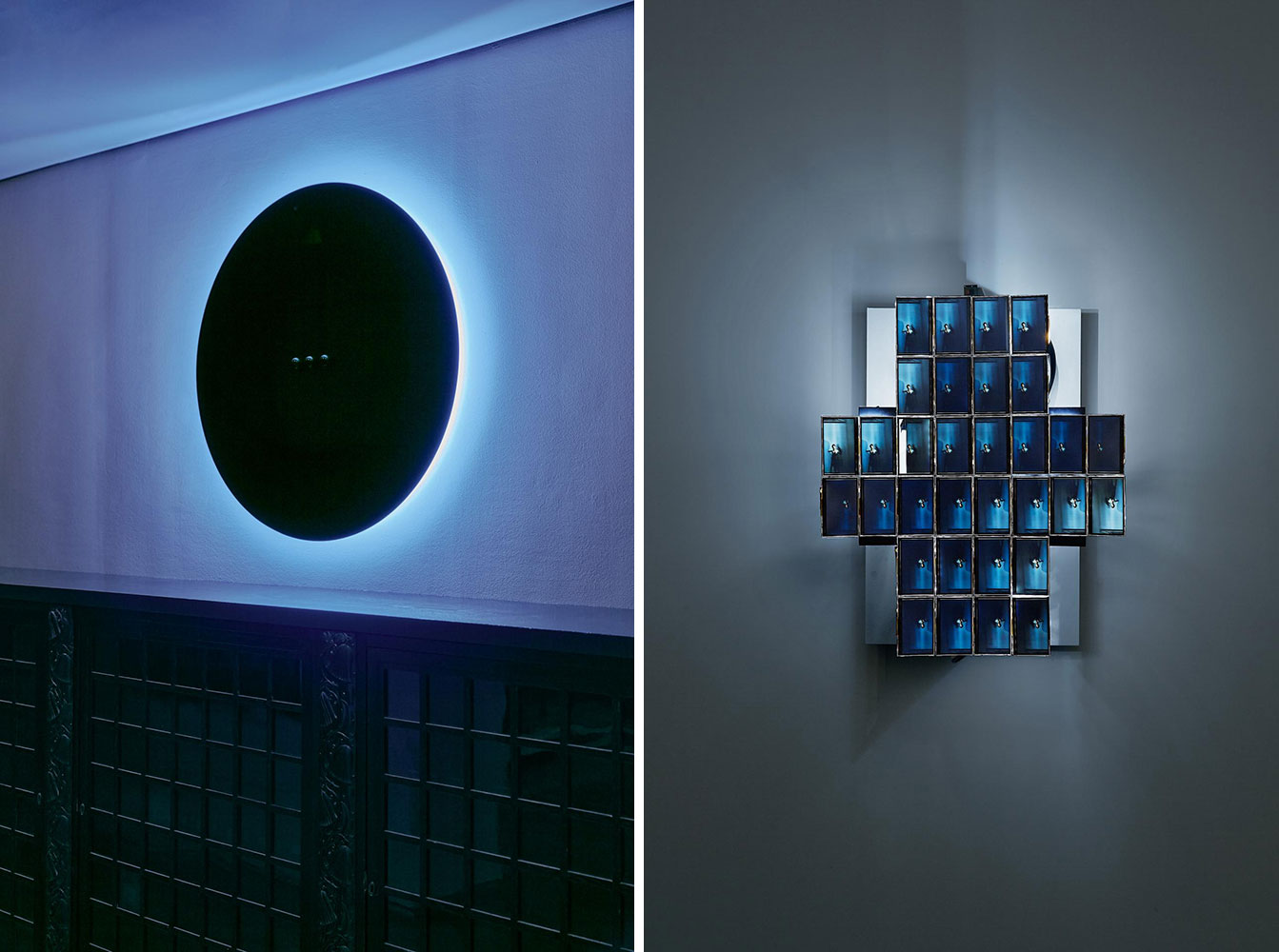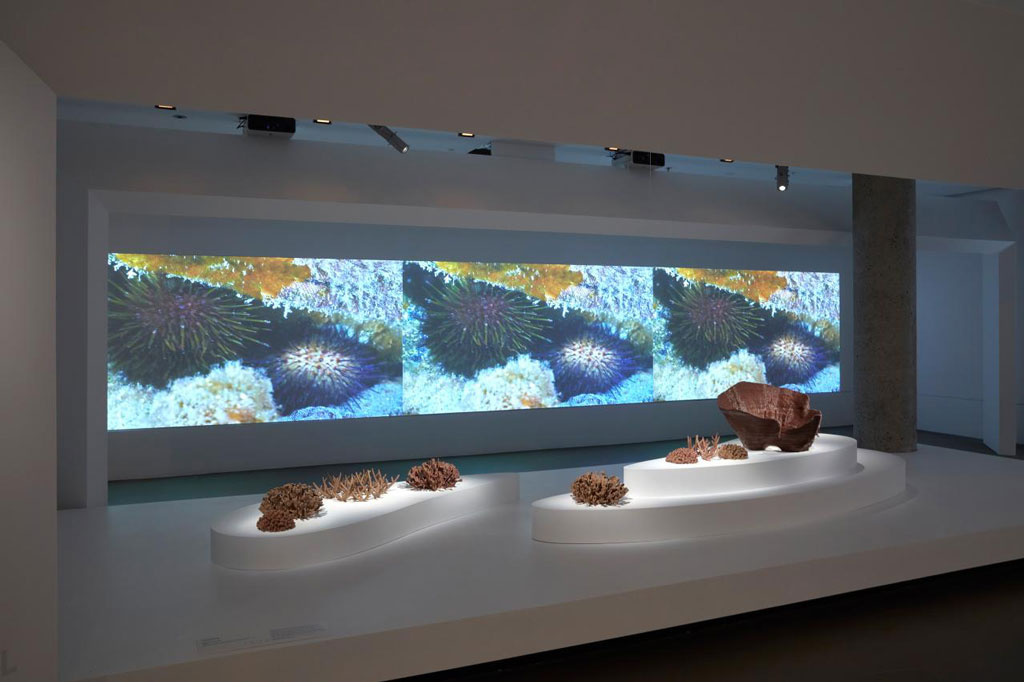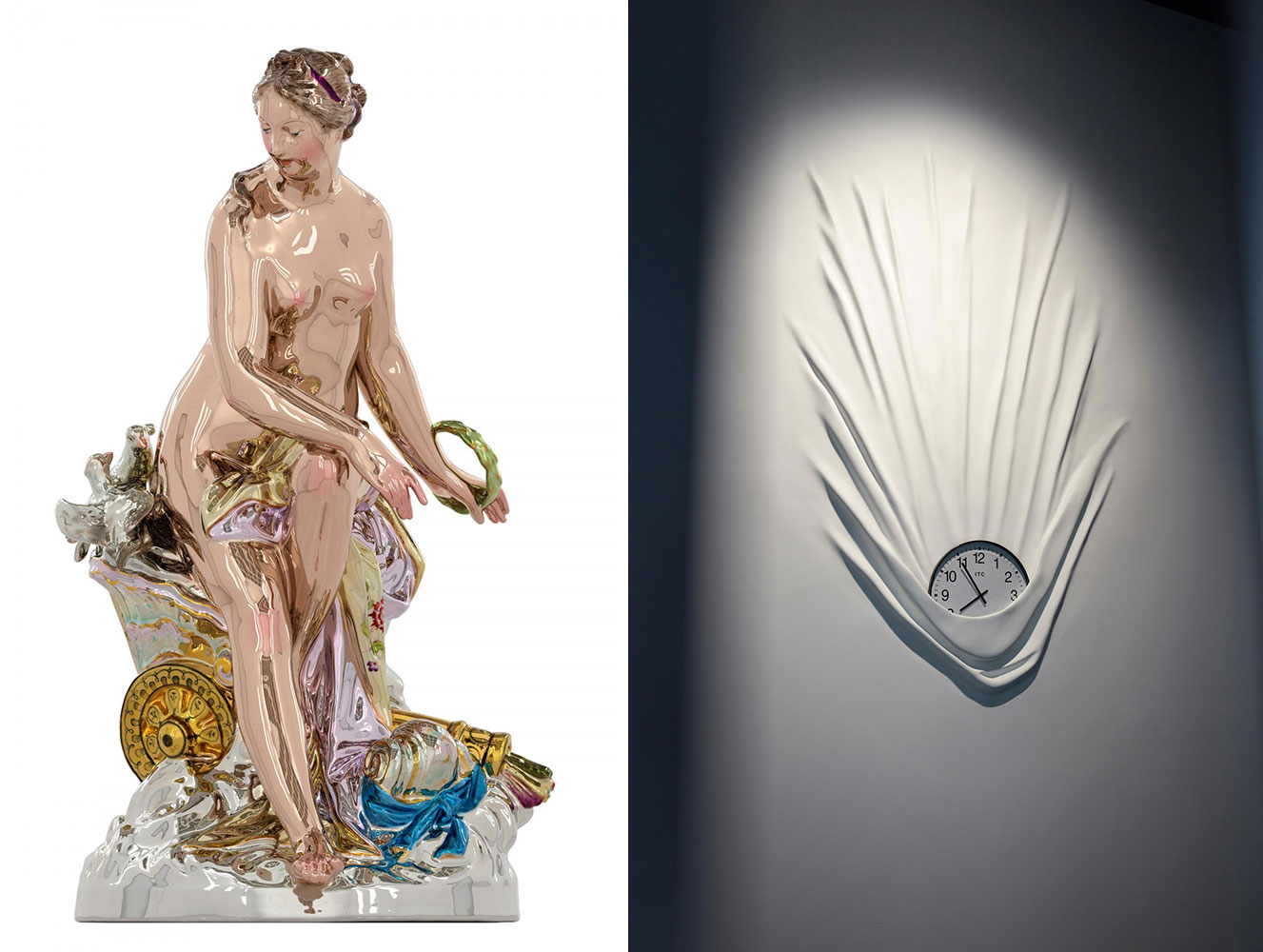BIENNALS:NGV Triennial
 The NGV Triennial brings contemporary art, design and architecture into dialogue, offering a visually arresting and thought-provoking view of the world at this time. Featuring major new commissions and recent works that span geography, perspective and genre, the exhibition celebrates the work of some of the world’s most accomplished artists and designers, while also giving voice to emerging practitioners.
The NGV Triennial brings contemporary art, design and architecture into dialogue, offering a visually arresting and thought-provoking view of the world at this time. Featuring major new commissions and recent works that span geography, perspective and genre, the exhibition celebrates the work of some of the world’s most accomplished artists and designers, while also giving voice to emerging practitioners.
By Dimitris Lempesis
Photo The NGV Triennial Archive
Featuring 86 projects by more than 100 artists, designers and collectives from more than 30 countries, the NGV Triennial is underpinned by four themes: Illumination, Reflection, Conservation and Speculation, that invite audiences to embark on a journey of exploration and to discover the intersecting ideas through the works on display. The four thematic pillars have emerged from the collective work presented in the NGV Triennial, illuminating the pressing concerns that preoccupy the artists, designers and architects of our time. Drawing on intimacy and awe, sadness and beauty, ruination and inspiration, these themes present a microcosm of the current world. Major commission and acquisition highlights from the NGV Triennial 2020 include: Adam Nathaniel Furman and Sibling Architecture: This new commission transforms the NGV’s Gallery Kitchen café by drawing on the design vocabulary of the boudoir, the salon and the night club. Through its flamboyant scenography and décor, the work aims to create an environment that is especially welcoming to those that may not feel comfortable or safe in the public realm. Aïda Muluneh: Drawing inspiration from the bold colors and patterns of traditional African body adornment, this work by the contemporary Ethiopian photographer is characterised by its powerful portraits of women in surreal settings. Alice Potts: Potts has created a set of speculative bioplastic personal protection equipment (PPE) facemasks made from food waste and dyed using flowers she has collected in London’s parks during the COVID–19 lockdown. The work seeks to highlight the acceleration of single-use plastic for COVID–19-related PPE and highlight the need for a shift to sustainable alternatives. Alicja Kwade: Double-sided mirrors and carefully placed, paired objects are used to achieve the optical illusion of sudden and surprising material transformations in this aesthetically beautiful and contemplative walk-through installation by one of the world’s most prominent contemporary artists. Angela Tiatia: In this large-scale video work, Tiatia who is Samoan/ Australian re-imagines the Narcissus myth for the twenty-first century with a chorus of 40 actors performing various acts of self-worship, ritual, love and despair. Their shared and contrasting emotional acts serve to highlight society’s preoccupation with the ‘self’ over pressing global issues. Atong Atem: Incorporating bold color and pattern inspired by her South Sudanese background, Melbourne-based Atem’s photographs explore the experiences of young immigrants, especially women, and the ways in which the diaspora knit together the different cultures that surround them. BTVV: A topsy-turvy, full-sized display apartment that deliberately plays with scale in order to interrogate the architectural vocabulary ubiquitous, low-quality property development. Created by winners of the Venice Biennale of Architecture’s Golden Lion, BTVV, comprising Alessandro Bosshard, Li Tavor, Matthew van der Ploeg and Ani Vihervaara. Cerith Wyn Evans: Spanning more than 10m in length, Wyn Evans’ new work, “C=O=D=A” (2020), is a large-scale, suspended neon light installation that offers visitors an ever-changing composition of lines and forms as they move around the work and alter their perspective. Daniel Arsham: “Hidden figures” (2020) comprises four human-scale sculptures that appear to be draped with a white cloth. Drawing attention to notions of representation in art history, the poses of the sculptures are drawn from the painted characters in two masterpiece paintings in the NGV Collection, Giambattista Tiepolo’s “The Banquet of Cleopatra” (1743–44) and Nicolas Régnier’s “Hero and Leander” (c. 1625–26). Fecal Matter: “Skin heel boots” (2020) is a culmination of the fashion house’s interest in non-surgical forms of body modification to imagine a post-human identity. The boots comprise a hyper-realistic silicone ‘skin’ featuring exposed toes, ankles, knees and leg muscles that are counterbalanced by short sprouting horns at the heel and shin. Fred Wilson: “To die upon a kiss” (2011) is the second in a trilogy of Murano glass chandeliers and examines the history and presence of Africans in Venice. Through its title, which is drawn from Shakespeare’s seventeenth-century tragedy Othello, and in its gradation of color, the work evokes themes of transformation. Glenda Nicholls: Comprising thousands of hand-woven finger knots, this expansive net is suspended and adorned with masses of feather flowers. “Representing the Murray River” the work celebrates the skills and knowledge passed down through generations of Indigenous artisans, as well as illuminating the central role of Aboriginal women in traditional fishing practices. Julian Opie: Outside NGV International, more than 20 LED screens positioned along St Kilda Road depict animated birds drawn from Australian species. Opie’s unique style, inspired by hieroglyphs depicted in ancient Egyptian art, returns to the NGV following his 2018 exhibition, in this installation, commissioned by the City of Melbourne and the NGV. Misaki Kawai: The Japanese artist presents “Moja Moja Life: Misaki Kawai for Kids”, an immersive environment d featuring a display of colorful, furry dog sculptures alongside a puppet studio and multimedia experience. Kawai is known for her playful approach to making art and has created installations but good) i made from papier-mâché fabrics and craft materials. Pierre Mukeba: A refugee from the Democratic Republic of the Congo and now based in Adelaide, Mukeba’s work explores his cultural heritage and African identities through a sophisticated use of portraiture and textiles, utilising a brush pen on unprimed cotton cloth and applying patterned wax print fabrics commonly perceived as being ‘African’. Porky Hefer: This major new work consists of a series of large-scale handmade environments populated with imaginary sea creatures from a dystopian future that the artist describes as “the Plastocene”. The collection, including a 14 metre-wide octopus constructed of giant hand-felted cigarette butts, draws attention to ocean pollution by imagining mutant sea creatures evolved from plastic bags, straws, and coffee cups. Tromarama: Featuring a neon curtain that pulses with the images of super-sized jellyfish, the work takes inspiration from the unique environment of Kakaban Lake on Kakaban Island – a ‘petri dish’ of evolution that is home to the stingless jellyfish. The work is ‘gamified’ and the ebb and flow of the depicted jellyfish is influenced in real time by the weather forecast on the Indonesian island. Tomoaki Suzuki: Suzuki is best known for his scaled-down, full-body sculptures of individuals, carved in wood using traditional Japanese techniques. The works depict friends or acquaintances that the artist met has met in his hometown of London, offering a snapshot of contemporary and urban culture as well as modes of individual expression.
Photo: Nari Ward, Last words of John Brown (red version), 2018, shoelaces, 121.9 x 467.4 x 10.2 cm, National Gallery of Victoria, Melbourne, Purchased with funds donated by Barry Janes and Paul Cross, 2019, © Courtesy the artist and Lehmann Maupin New York, Hong Kong, and Seoul
Info: The NGV Triennial, NGV International, 180 St Kilda Road, Melbourne, Duration: 19/12/2020-18/4/2021, Days & Hours: Daily 10:00-17:00, www.ngv.vic.gov.au


Right: Dale Hardiman and Stephen Royce, Open garden: digital mirror, 2020, LCD panels, single board computer, camera, steel, 80.0 x 50.0 x 30.0 cm, National Gallery of Victoria, Melbourne, Purchased, NGV Supporters of Contemporary Design and Architecture, 2020, © Dale Hardiman and Stephen Royce, Photo: Jonathon Griggs



Right: NGV Triennial 2020 installation view of Daniel Arsham, Falling clock 2020, Commissioned by the National Gallery of Victoria, Melbourne. Proposed acquisition with funds donated by Loti & Victor Smorgon Fund and Barry Janes and Paul Cross, © Courtesy the artist and Perrotin Gallery. Photo: Sean Fennessy


